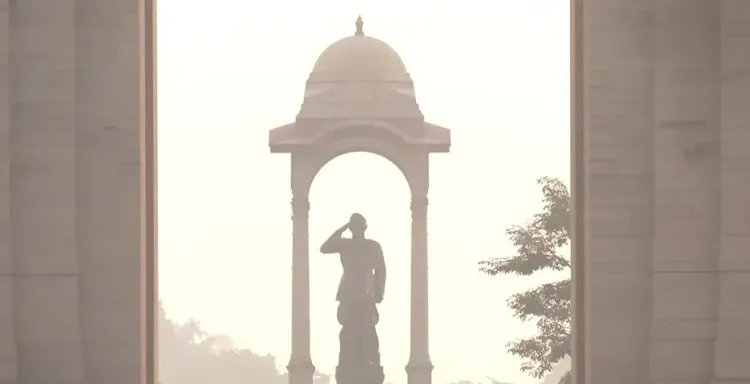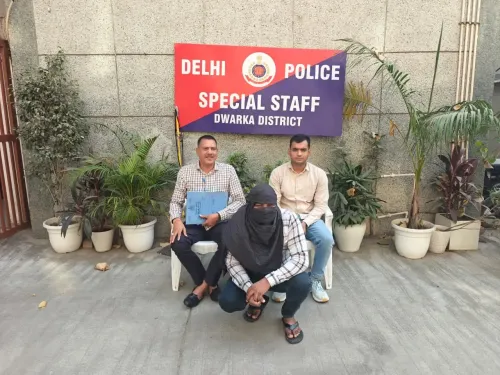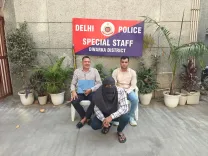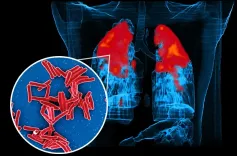Why Is Air Pollution Surging in Delhi Before Diwali?

Synopsis
Key Takeaways
- Delhi's AQI has reached alarming levels, indicating poor air quality.
- The Supreme Court approved green crackers for Diwali celebrations.
- The government has introduced a comprehensive Winter Action Plan for pollution control.
- Public engagement is crucial for implementing pollution control measures.
- Enhanced dust control and monitoring will be prioritized this winter.
New Delhi, Oct 17 (NationPress) The air quality in Delhi has significantly deteriorated, falling into the 'poor' category as the city prepares for the Diwali celebrations. Despite the Supreme Court's approval for the sale of environmentally friendly crackers during designated hours, pollution levels remain a concern.
As of 8:00 AM on Friday, the average Air Quality Index (AQI) for Delhi was recorded at 240, indicating 'poor' air quality.
In the surrounding Delhi-NCR region, several cities reported alarming AQI levels: Faridabad at 158, Gurugram at 150, Ghaziabad at 165, Greater Noida at 148, and Noida at 145. Most areas in the capital exhibited AQI readings ranging from 200 to 300, signifying moderate to poor air quality conditions.
At notable spots like India Gate, a thick layer of smog has settled, signaling the onset of the city's annual winter pollution challenges.
The Supreme Court has recently allowed the use of firecrackers deemed less pollutive for the upcoming Diwali celebration as air quality plummeted to 'very poor' levels in Delhi.
In response to the typical seasonal pollution spikes between October and February, the Delhi government, under Chief Minister Rekha Gupta, has introduced an extensive Winter Action Plan for 2025–26. This initiative was revealed by Environment Minister Manjinder Singh Sirsa on Thursday.
The plan comprises 25 essential measures across seven thematic areas: road dust, vehicular emissions, industrial and power sector pollution, open burning and solid waste, citizen engagement, monitoring, and green innovation. It will be executed in collaboration with over 30 departments and agencies throughout the capital.
During a high-level review meeting, Minister Sirsa instructed senior officials to ensure strict and timely execution of the plan, with real-time monitoring facilitated by the Green War Room. Responsibilities have been assigned to crucial organizations including PWD, MCD, NDMC, DSIIDC, DPCC, Transport Department, and Delhi Police.
"Compliance will be non-negotiable this winter," Sirsa stated.
He emphasized the need for enhanced measures for dust control, adherence to construction regulations, utilization of PNG in industrial operations, and targeted enforcement initiatives.
Furthermore, all 30 participating agencies have been directed to coordinate daily through the Green War Room.
Encouraging public involvement, the minister called on residents to utilize the Green Delhi App, comply with the GRAP (Graded Response Action Plan) advisories, and favor public transport and electric vehicles.
To combat road dust, a total of 86 mechanical road sweepers, 300 water sprinklers, and 362 anti-smog guns have been deployed across the city. Additional procurement for 70 more sweepers and related dust-control tools is currently underway. All primary roads managed by PWD, MCD, NDMC, and DSIIDC will undergo vacuum-sweeping with increased frequency, and strict 14-point dust control regulations for construction sites remain compulsory.










